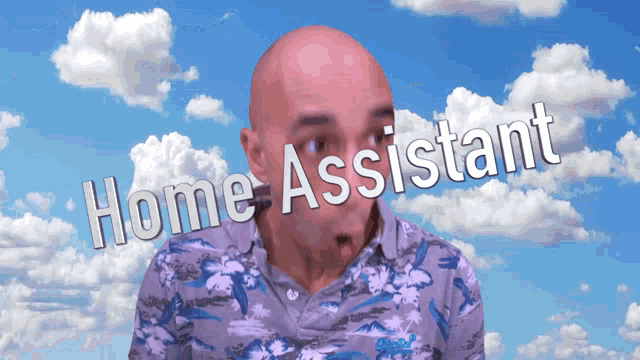Is Home Assistant the Platform for you?
When I sat down to write this I was planning on doing a video on the reasons you should pick Home Assistant. Because if you are building a smart home Home Assistant is the platform you need.

But no solution will ever be perfect for everyone. And I think we sometimes glass over the ugly bits because we just never considered them all that ugly. I find myself rolling my eyes when people say Home Assistant is hard because for me it never was. But I come from a background of programming and IT operations where my job was troubleshooting technology I had no knowledge of. For me, Home Assistant is easy. But it’s very possible it wont be for you. And I want to make sure we address that.
So let’s talk about the Five Reasons Home Assistant might not be the smart home platform for you.
Home Assistant is a Choose Your Own Adventure
A lot of people will consider this to be a plus, me included. Because the smart home space is fragmented and in a state of flux so having lots of options makes it easier to build a complete smart home.
But for someone just starting out on the journey of building a smart home, having a lot of choice is just going to lead to decision paralysis. And what happens is you just throw tour hands up because you simply don’t know enough to make an informed decision on which option is the best for you or for the long term.
Home Assistant is really good at giving you a solid foundation to build on. But it doesn’t really hold your hand and take yo to the smart home promise land. You are required to know or be able to find your way there.
For that you are better off with something like Smartthings or even Hubitat. Both of those platforms make it easy to get started. Just buy a hub, or even easier, just buy an Amazon echo with Zigbee built in.
The point is Home Assistant requires you to have some idea of what kind of smart home you want, what kind of devices you want to add, and be willing to add support for each device type you want to add to Home Assistant.
Which leads us to the next reason.
Home Assistant doesn’t have an Easy Button
Smartthings has one button to add any of the support devices. You click that button, and if Smartthings sees a device it can talk to, it adds it. Home assistant is more modular. There is no one device integration to manage all the connections. You have to go to the specific integration or place to add each device. Zigbee, Wifi, and ZWave devices all have different places where they are managed.
And while basic automations are easy, once you decide you want to get into more advance automation that contain decision logic you are going to be dealing with yaml, jinja, and basic python. For those without a programing background those topics are going to be new, and frankly there is no way to jump ahead without learning the basics.
It’s easy for me to say that learning those skills is easy, but again my perspective clouds my judgment. And I can recognize that for someone new to tech or coming from something like Smartthings the learning curve might be more than someone is willing to take on.
Once you have devices added, Home Assistant keeps them all in one place, but adding them can be confusion. I suspect one day we may get there, but for now there is no easy button.
Home Assistant is Open Source
Ok, so this one might be a bit of a stretch. But hear me out.
Open source simply means that Home Assistant’s code is published on the web and maintained by a collaborative group of smart home enthusiasts instead of being controlled by a corporation behind closed doors seeking to maximize profit. And I honestly believe that is a good thing. However, while it has a solid list fo pros, it also could be a con to some.
Instead of being controlled by a major corporation where decisions are made by a small group of people, or maybe even one person, an open source project’s roadmap and vision is shaped by the opinion of all those people contributing. Again, from a feature and security standpoint it’s a good thing. But it also means that the vision changes quicker than one driven by a corporation.
Home Assistant’s overall path and vision is pretty stable but within the integrations a lot of change can happen quickly. For example, back at the 2020 Home Assistant conference a new better Zwave Roadmap was laid out. Two months later, February 2021, the community had produced a better solution and that solution had already replaced the official integration as the path forward.
Running Home Assistant means you are going to want to stay up to date with the changes happening so that you can make adjustments as required to keep your Smart Home running smoothly.
And running smoothly brings us to the next reason.
Home Assistant Breaks from Time to Time
Breaking changes are the changes to Home Assistant that break some functionality of your smart home. In every case, these are almost always out of your control.
I have been using Home Assistant since late 2015, and in that time it has gotten a 1000 times better., but while the frequency of breaking changes has lessened they still happen. Some of those changes are simply growing pains from Home Assistant getting better and more future proof. And some of its due to Home Assistant’s vision of bringing all your disparate smart home tech until one roof.
The Smart home space is a mess these days. Companies are still trying to figure out what kind of smart tech company they want to be, and that means that in some cases they change their terms of service, or even shut down products we may have relied on. And some of Home Assistant’s initial functionality was built on unofficial sources. The team is doing a good job of ensure that going forward everything is built on official supported functionality, but for some of the older integrations things break when those companies finally decide to close those holes.
All of this means is that once you choose a path to your smart home, forces outside your control can force you to change that path from time to time. Like looking for a new weather service because Apple bought the one you were using and shut it down.
Home Assistant is Addictive
This one is perhaps not as big of a deal for some than others. For me on the other hand, I was caught off guard by how addictive it would be. Prior to Home Assistant I used Smartthings, and it really did make getting started easy. Plus it hid all the technical pieces so I could just focus on adding and automating devices. Once I moved to Home Assistant and found I had an open world to choose my own adventure I had all kinds of ideas I wanted to make a reality. In that way home assistant is a gateway drug.
With Smartthings I never found myself up all night redoing my Zigbee network because I though I could make it better because Smartthings hid that from me. Nor did I spend hours setting up Smartthings to insult me because I forgot to move the clothes to the dryer.
Of course all of that is not needed for most people I suspect, but Home Assistant gave me to the ability to do it so I did. Since 2015, I have rebuilt my entire home assistant system from the ground up at least 5 times because I simply saw a better way.
I’ve gone from just basic automations, to building nice wall mounted dashboards, to tossing all of that and trying to build a system that doesn’t require anyone to touch a light switch, or trigger a scene, or issue a voice command. And In each step in that journey I have spent countless late nights long after everyone has gone to bed tinkering with automations, scripts, scenes, and even just watching YouTube videos and reading blogs about all the cool things I could do with Home Assistant.
It started to take so much of my time that once sometime in early 2017 I gave up on Home Assistant just because it required so much of my time. And went as far as moving everything back to Smartthings because I just wanted the easy button and with Smartthings at least the urge to tinker would be limited by the lack of access.
I don’t think I made it a week before I was jonesing for Home Assistant again and then once again removed Smartthings and put everything back in Home Assistant. These days I still do a lot of tinkering, but it’s less about fixing broken things and more about just wanting to make the house smarter.
That said, Home Assistant is not a good platform for someone that just wants to automate their porch lights and get a full 8 hours of sleep each night.
And there it is.
Five reasons Home Assistant might not be for you.
I honestly believe Home Assistant is the platform to build a smart home on. But like I said I also know it isn’t for everyone. It does require more work than some of the other options, especially if you haven’t spent a lot of time building solutions to problems without really understanding the technology you are working with. And I think everyone considering Home Assistant should know what they are getting into before joining the party.
If you have been considering whether Home Assistant is the right platform for you, I hope those five reasons help you in that process…whatever direction you end up choosing.
Until next time, Go Automate the Boring Stuff
